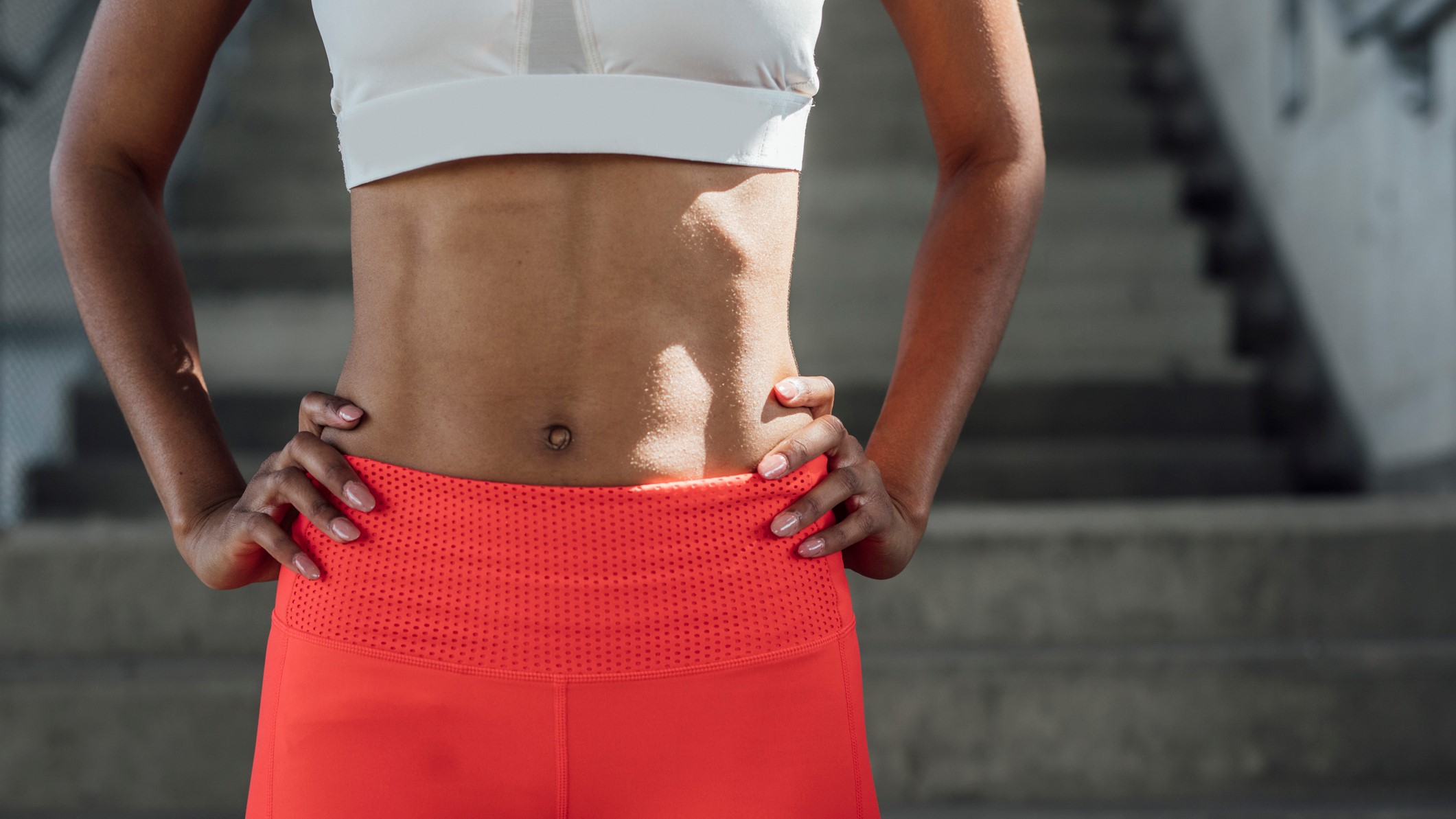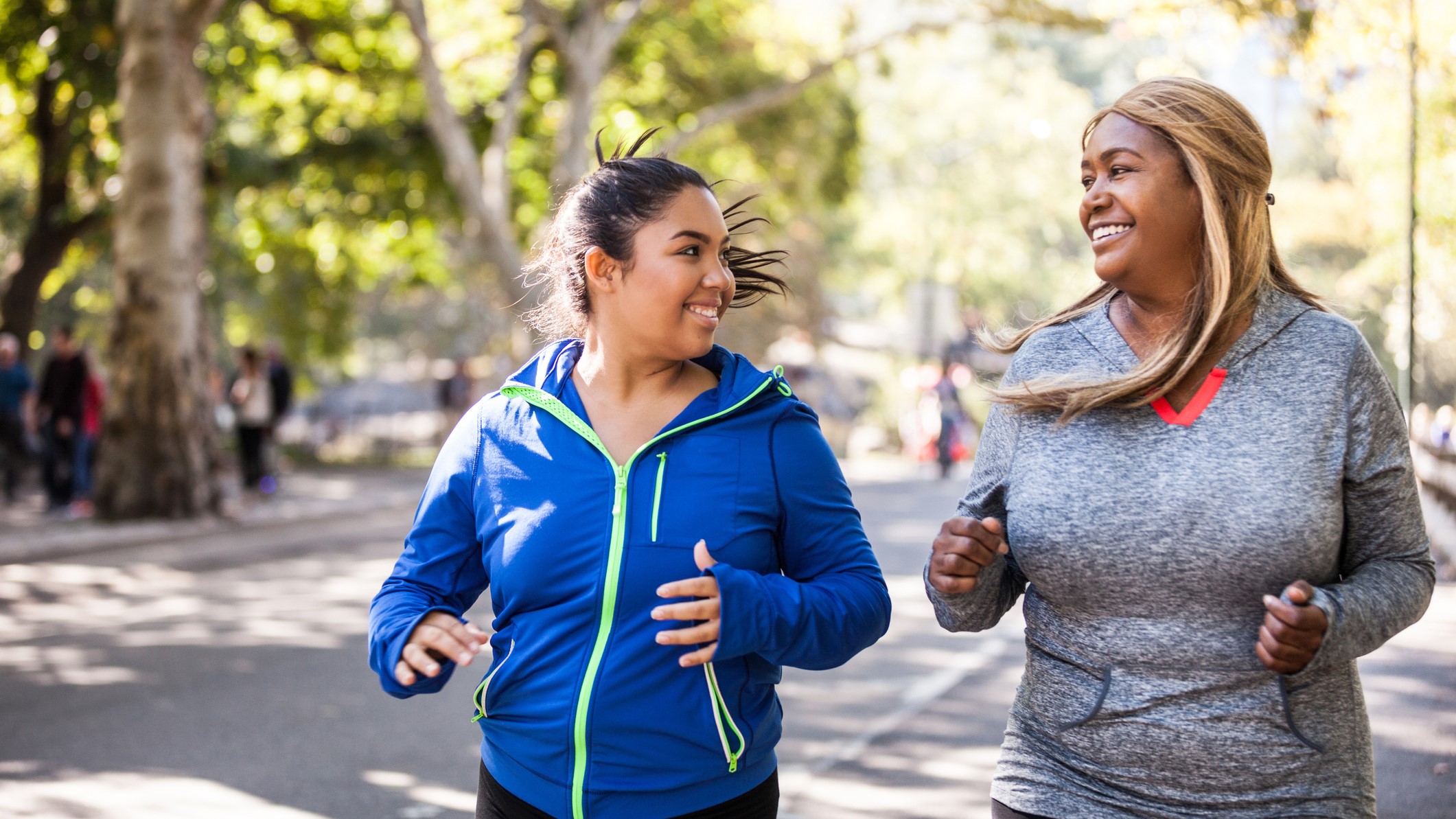Does running burn fat? Here's what you need to know

Running has long been heralded as one of the best forms of cardiovascular exercise — it’s relatively cheap, doesn’t require a gym membership or a lot of equipment, and most of us already know how to do it. But does running burn fat? And what if you can’t stand to pound the pavement — are there other exercises out there that are just as effective? Or should you suck it up, tie your laces, and hop on the treadmill?
Running burns calories…
There’s a reason you’ll see the sidewalks full of runners on a beautiful day — a 150-pound person can expect to burn around 350 calories for every 30 minutes they run, if they’re clocking around a 10-minute mile. That’s more than a fast walk (154 calories), elliptical training (214 calories), or an intense yoga session (297 calories) done in the same amount of time. Besides torching calories, running has been proven to boost your mood, lessen anxiety and depression, and reduce stress.
Taking up running? Get the right gear with our roundup of the best running shoes, the best women's running shoes, the best sports bras, and the best gym leggings.
…but does running burn fat?
A 2015 study in the Journal of Sports Medicine and Physical Fitness found that runners who logged more than 3.1 miles per week while making targeted dietary changes lost an average of 12.3 pounds of fat mass over the course of a year. Those who ran less than 3.1 miles per week while watching their diet shed an average of 7.83 pounds of fat.
As you might have guessed, running has been shown to burn some significant amounts of fat. But that doesn’t necessarily tell us the whole story.
Fat loss is primarily dependent on being in a caloric deficit, which happens when your body burns more calories than you consume. So for example, if your body needs around 2,200 calories a day, but you take in 1,800, you will be in a caloric deficit.
By contrast, if your body requires 2,200 calories a day, and you consume 2,600, you’ll be in a caloric surplus. When you’re in a surplus, the body stores those extra calories in adipose tissues, also known as fat.
Get instant access to breaking news, the hottest reviews, great deals and helpful tips.
Certain metabolic conditions notwithstanding, the most important aspect of fat loss is taking in fewer calories per day than your body requires. At that point, the body will start looking for other forms of energy — namely, the energy stored in your fat cells.

If you hate running, here’s some good news
Yes, running can burn fat. But if the only thing that will get you to run is an angry bear in hot pursuit, don’t worry. There are plenty of other exercise options that will burn fat, and some exercises that will burn even more calories than running. One such option, high-intensity interval training (or HIIT), is highly effective at burning whole-body adiposity, as this study found.
If you're still opting to work out from home, we've hand-picked the best exercise bikes and the best weighted jump ropes to help you to up your cardio indoors.
If the thought of doing any kind of cardio makes you cringe, there’s more good news. A recent study published in the journal Sports Medicine found that strength training alone can result in a 1.4% reduction in body fat - the same we’d expect to lose from cardio or aerobics.
Increasing your lean muscle mass through strength training will raise your basal metabolic rate, or BMR. This is the number of calories your body uses at rest, with no additional exercise or movement. Muscle needs more energy than fat to sustain itself, so more muscle means your body requires a greater number of calories just to function. (Lifting at home? Check out the best adjustable dumbbells to shop right now).
Remember that taking in fewer calories than your body requires results in a caloric deficit. With added muscle mass, the daily caloric intake that used to put you in a surplus could now potentially put you in a deficit. You’ll want to make sure you’re eating enough to support your growing pecs and quads, so be sure to consult with a registered dietician, sports nutritionist, or certified personal trainer for guidance.
As you build muscle, your body composition will change. You’ll see inches drop and fat lost, even though you may not see the number on the scale move that much. But don’t forget - you’re gaining lean muscle, and that’s a good thing! If you’re tracking your weight, one of the best smart scales can give you a bigger picture of exactly what’s happening in your body.
Strength training is also important for a host of other reasons besides fat loss and aesthetics, like bone health, injury prevention, and pain reduction. Plus, the stronger you are, the easier it is to move around in the world. That’s not to say you should pass up the super sweaty, heart-racing kind of exercise completely - you’ll want to do enough to ensure your cardiovascular system stays in optimal condition. 150 minutes of cardiovascular exercise per week should be your goal.

If you love running but aren’t seeing any changes, here’s what to do
If you’re running with a goal of fat loss and aren’t dropping any inches, start tracking your caloric intake (what you eat) and output (how much you move). Calorie counting apps and activity trackers can give you rough estimates for these numbers. You may (unknowingly) be in a caloric surplus, despite the miles you’ve logged.
If you don’t already have a strength training routine in place, now’s the time to start one. Besides raising your BMR, strength training is a necessary component for every runner, regardless of experience or skill. Strong legs, hips, and core muscles are essential in ensuring proper running form, range of motion, and prevention of common injuries.
Should you start running to burn fat?
Running, combined with a well-rounded strength program and a monitored diet, can result in fat loss. If you love running and want to shed some inches, put on a pair of sneakers and go for it! Even if fat loss isn’t one of your goals, running can benefit both your physical and mental health in a multitude of ways.
If you don’t love running, skip it - there are plenty of methods to burn fat without ever hitting the track. Maintain a caloric deficit, start a strength training regimen, and find a cardiovascular activity that you enjoy.
Looking for more workout inspiration? Read what happened when we tried this dumbbell workout with over 1.3 million views, the 10 best exercises to blast belly fat, or this 10-minute ab workout with 65 million views.

Jennifer Rizzuto is a freelance writer and certified personal trainer based in Long Island, NY. She covers various fitness-related topics and reviews for Tom's Guide. She also writes sketch comedy and short films, and performs frequently as an actor, singer, and improviser. When she's not writing, working out, or performing, you'll find her trying to convince her husband to get a dog.
